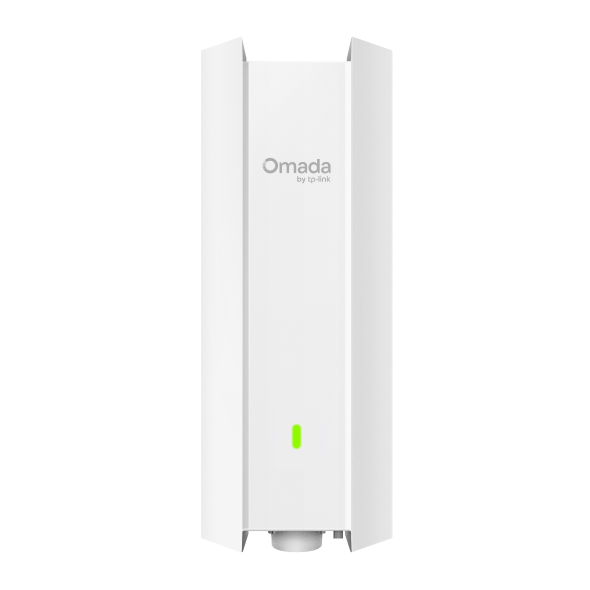Troubleshooting: AP goes offline abnormally
Contents
This article introduces how to troubleshoot the issues that AP devices go offline abnormally.
- Omada AP
- Omada Controller (Software Controller/Hardware Controller/CBC, V5.9 and above)
When AP devices go offline (displayed as DISCONNECTED on the Controller), you can refer to the troubleshooting steps in this article.
Here are the troubleshooting steps for Wired AP and Mesh AP respectively.
Step 1. Check the LED status of the AP.
- If the LED is off, it indicates that the power supply for the AP is abnormal. If the AP is powered by a DC power supply, check whether the power plug is fully inserted or whether the power cord is damaged. If the AP is powered by PoE, check the power sourcing equipment (PSE) and the specifications and length of the Ethernet cable.
- If the LED flashes slowly (like flashes every 5 seconds), it indicates abnormal connection among the AP, the Controller, and the Gateway. In this case, check whether the Ethernet cable is properly connected and the Controller is correctly configured.
Step 2. Check the IP address of the AP to see whether it has been changed before the AP goes offline.
- If the AP obtains a static IP address, make sure it is in the same network segment as the Controller’s.
- If the AP obtains a dynamic IP address, go to the DHCP server to check whether the AP has obtained the IP address.
Step 3. Check whether the LAN IP address of the PC where the Controller runs and the IP address of the AP are in the same subnet. If not, check whether Management VLAN has been enabled before the AP goes offline.
- If Management VLAN is enabled, make sure the corresponding VLAN tunnel has been set in the network. Meanwhile, it is also recommended to configure Option 138 or Option 43 on the DHCP Server based on actual needs.
- If Management VLAN is disabled, check whether the VLAN settings have been modified on the corresponding ports of the DHCP Server, which may lead to the change of the LAN IP address of the PC where the Controller runs. In this case, configure the IP settings to make sure the LAN IP address of the PC and the IP address of the AP are in the same network segment. Then the AP can be managed by the Controller again.
Step 4. Check whether an IP address conflict occurs in the network. If so, remove the devices with the IP address conflict to see if the offline AP can resume connection.
Step 5. Check whether the connection between the AP and the Controller is normal. If not, check the Ethernet cable connection.
Step 6. Check whether there exist a large number of multicast and broadcast messages in the network that lead to abnormal communication between the Controller and the AP and cause the AP to go offline.
Step 7. Check whether the firewall is enabled on the PC where the Controller runs, which may lead to abnormal communication between the Controller and the AP.
Step 8. If the AP is an Omada Pro model, check whether the license has expired.
Step 1. Check the LED status of the Mesh AP. If the LED is off, it indicates that the power supply for the Mesh AP is abnormal.
- If the AP is powered by a DC power supply, check whether the power plug is fully inserted or whether the power cord is damaged.
- If the AP is powered by PoE, check the power sourcing equipment (PSE) and the specifications and length of the Ethernet cable.
Step 2. Check whether the Mesh AP supports the same channel of the 5 GHz band as the one set for the Root AP.
Step 3. Make sure that Mesh, Auto Failover, and Full-Sector DFS are all enabled.
Step 4. Check whether there exist obstacles that cause severe signal attenuation and cause Mesh AP goes offline.
Step 5. Check whether the transmission power of the Root AP is too low to cause Mesh AP goes offline.
Step 6. Check the IP address of the Mesh AP to see whether it has been changed before the AP goes offline.
Step 7. Check whether Management VLAN has been enabled before the Mesh AP goes offline. If so, make sure the corresponding VLAN tunnel has been set in the network. Meanwhile, it is also recommended to configure Option 138 or Option 43 on the DHCP Server based on actual needs.
Step 8. Check whether you have ever logged into the standalone Web GUI of the Mesh AP before it was adopted to Controller, which may cause the AP unable to become Isolated and be discovered and managed by the Controller. In this case, reset the AP to factory defaults and just keep the AP powered on without any settings.
This article presents the troubleshooting methods to deal with the abnormal connection issues of Wired and Mesh APs. If your AP goes offline unexpectedly, follow the steps above for troubleshooting.
Get to know more details of each function and configuration please go to Download Center to download the manual of your product.
Is this faq useful?
Your feedback helps improve this site.
TP-Link Community
Still need help? Search for answers, ask questions, and get help from TP-Link experts and other users around the world.










